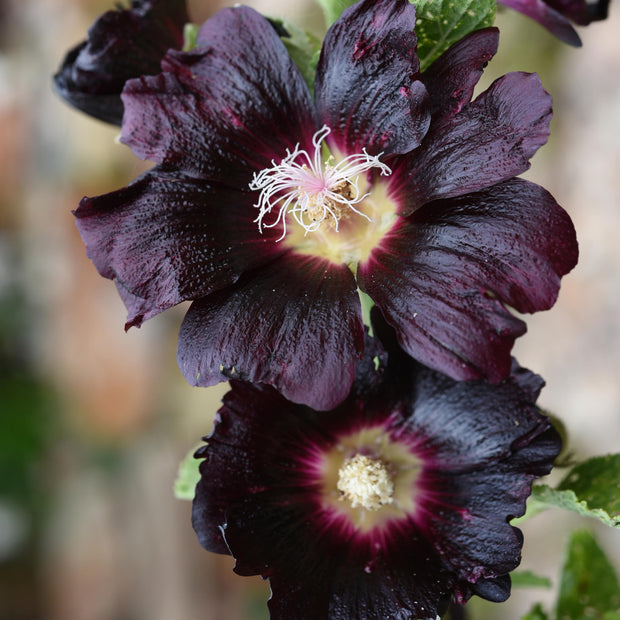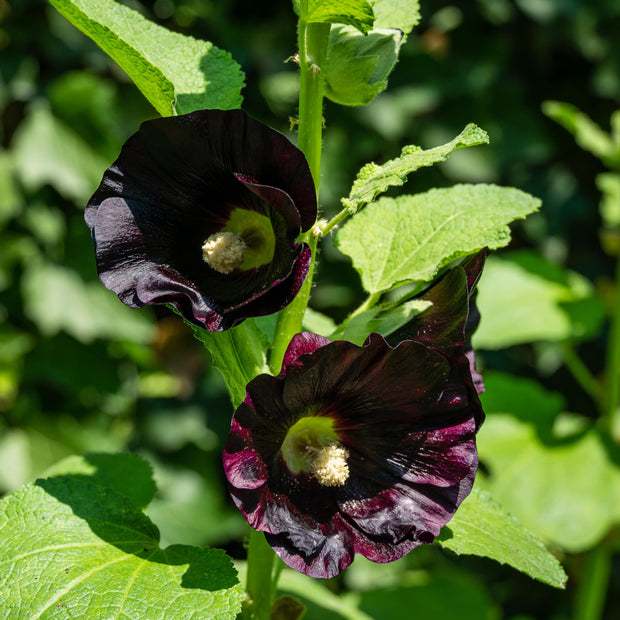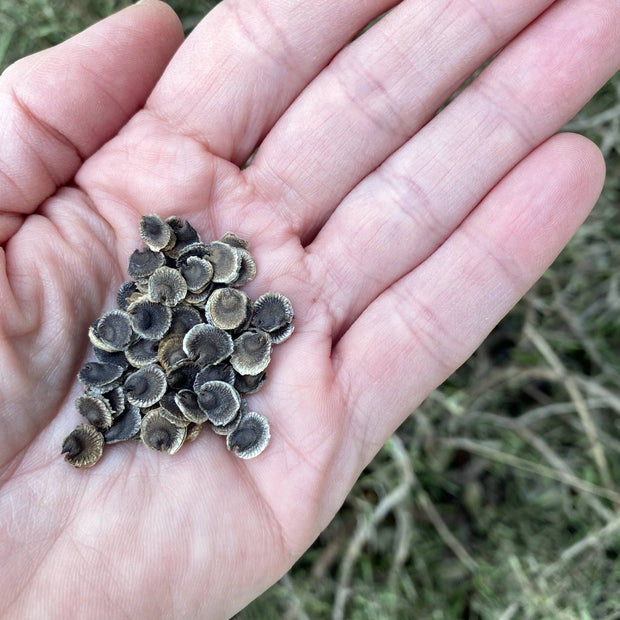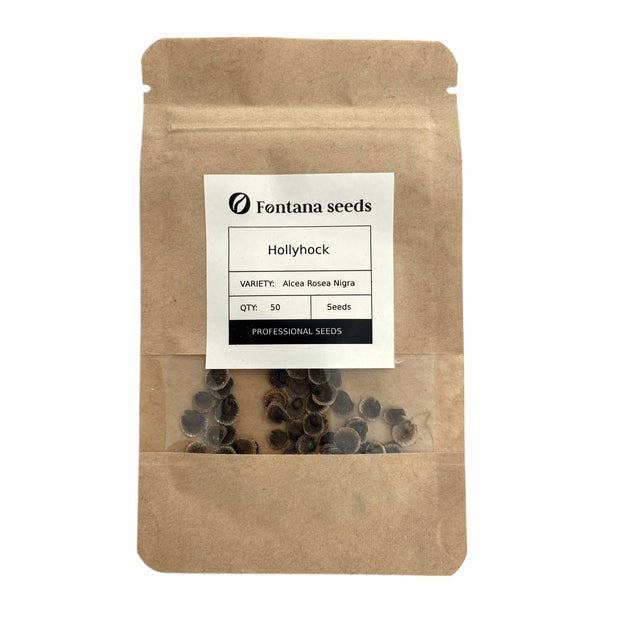Hollyhock Alcea rosea 'Nigra'
As low as €3,90 per package
- Dark maroon, almost black!
- Blooms from mid-summer through to autumn
- Spectacular blooms each with a yellow throat
- 50 seeds per pack
PRODUCT DESCRIPTION
Like to grow a garden filled with Black Hollyhock flowers? Make a start with our freshly harvested Alcea rosea Nigra flower seeds. Black Hollyhock is a gorgeous, deep mahogany coloured flower which blooms through the summer months. The plants stand to a towering height of roughly 180cm tall, displaying several, almost black blooms along it's erect stems. A perfect choice for cottage gardens, the Black Hollyhock can be seen on farms and in many home gardens. It is popularly used as a backdrop plant and can be planted along fences as well. For a gorgeous contrast, try planting Black Hollyhock in front of a white fence, or along the perimeter of your white house. These plants are known to attract an array of beneficial insects to the garden, such as butterflies, bumblebees, honeybees and hummingbirds as well.
Grown as a biennial flowering plant, Black Hollyhock will grow quickly, establishing a deep root system. The plants will then wilt on the surface due to the freezing temperatures of winter, later returning the following spring. Biennials such as this are known to flower the second year. You can however achieve blooms in the first growing season, if the plants are started early enough. Hollyhock plants are known to readily self seed, so they are often seen as a perennial flowering plant. The seeds can either be collected at the end of the season, when all of the blooms have dried out, or they can drop to the bare ground beneath.
Order your top quality Hollyhock BLACK Seeds with Fontana Seeds Today!
How to grow Black Hollyhock seeds
Transplant seedlings when large enough to handle into trays or 7.5cm pots. Gradually acclimatise plants to cooler conditions for a few weeks before planting out after all risk of frost 45cm apart.
Rust remedies
Hollyhocks are archetypal cottage garden plants (you often see them growing beautifully in churchyards). The cleaner, sulphur-free air that we all now enjoy, however, means that fungus on roses and hollyhocks is more common. Both plants need tinkering to be at their best.
Rust fungus forms little pustules on the underside of hollyhock basal leaves and often spreads from there up the stem. If you want to grow your hollyhocks right by a path, as , they need to look vigorous and healthy. The only way to guarantee this is to use fungicides. If Bordeaux mixture, a traditional copper sulphate-derived remedy, is not enough to hold rust at bay, you may need to use stronger fungicides.
If this all feels far too much like chemical warfare, ignore any rust problems and hide the foliage of your hollyhocks by putting them nearer the back of the border.
Make more plants
Hollyhocks self-sow, so once you have introduced them they should spring up of their own volition, but they will creep to the sunny, open front of the bed. Watch out for this and dig some up and put them further back out of the limelight to get a balanced sweep. Don't transfer them directly, though – they need a short spell of TLC.
Dig up self-sown seedlings and pot them into a 7cm pot. Once the roots have filled it, move them on into a slim, deep pot to accommodate the tap root.
Read more frequently asked questions about growing Hollyhock seeds
Fast Facts
- Article number:
- S00260-11
- Botanical Name:
- Alcea rosea Var. Nigra
- Common Name:
- Black Hollyhock
- Days to germinate:
- 7-14 days
- Days to maturity:
- About 18-21 months after you sewed your seeds your hollyhocks will have reached adult size and will reward you with beautiful tall spikes of hollyhock flowers.
- Flowering time:
- June - September
- Hardiness and Longevity:
- Hardy Perennial
- Height:
- Up To 180cm
- Ideal For:
- Cottage Gardens
- Spread:
- Up To 60cm
- Sunlight:
- Full sun







